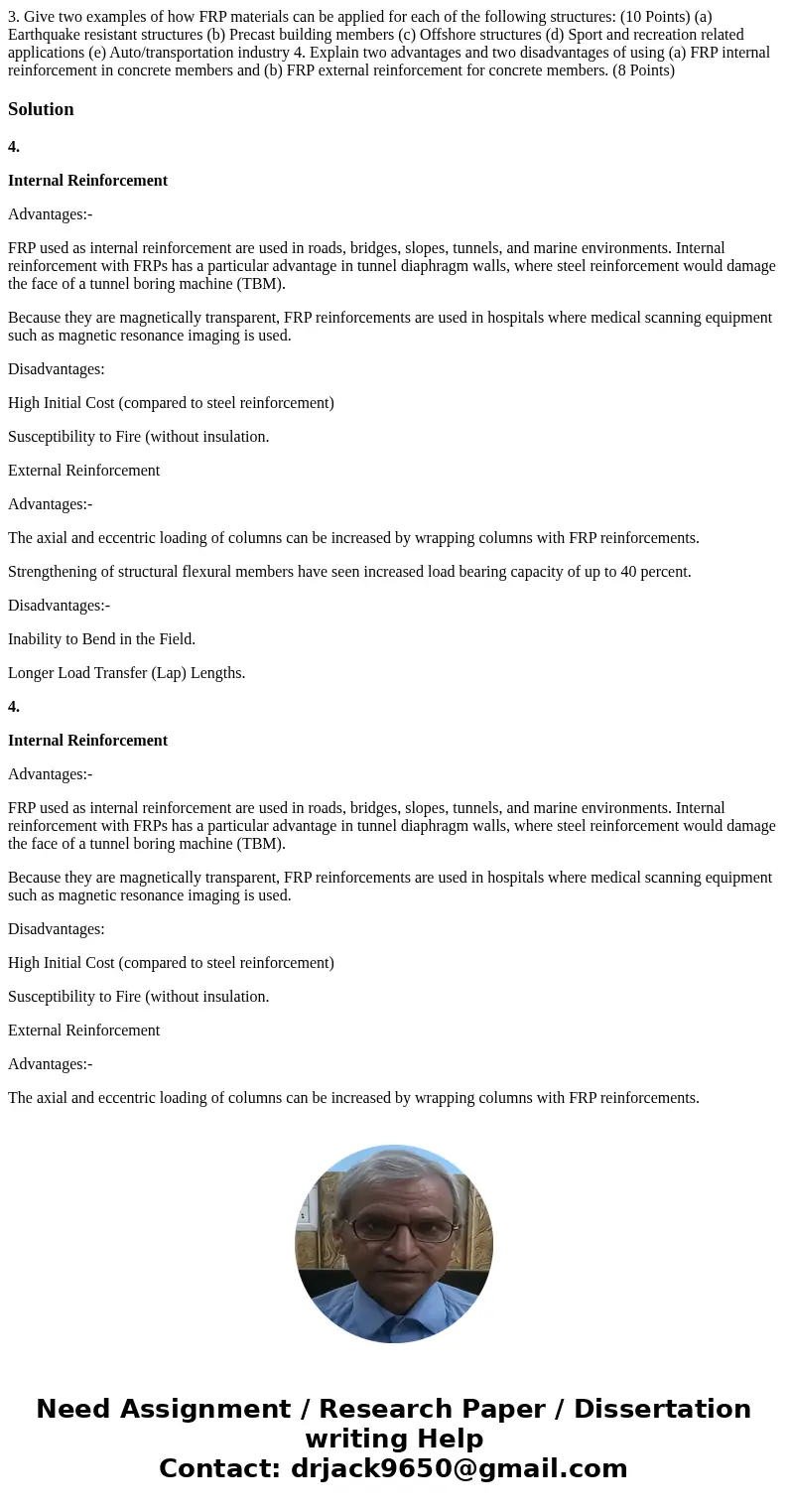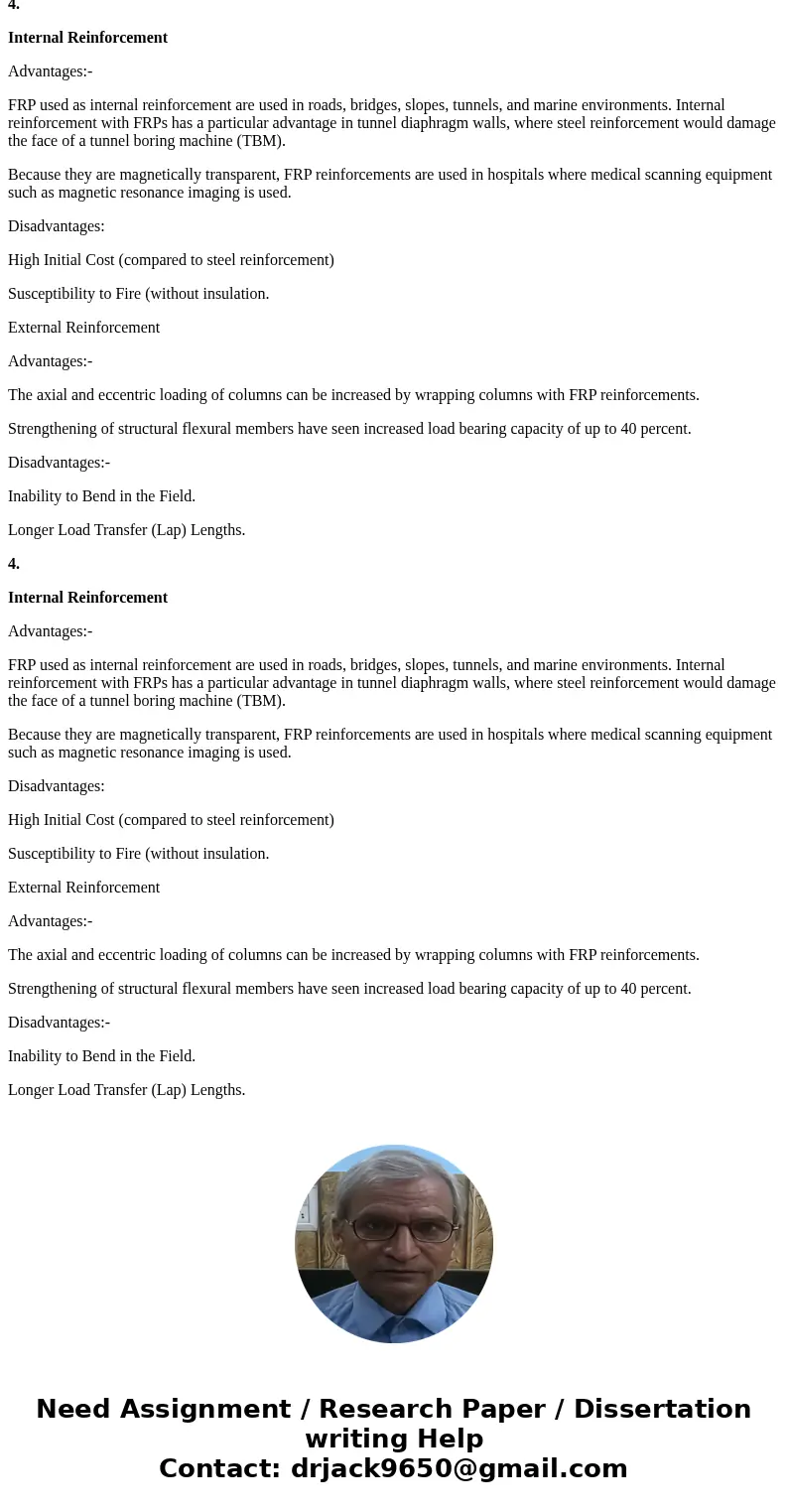3 Give two examples of how FRP materials can be applied for
Solution
4.
Internal Reinforcement
Advantages:-
FRP used as internal reinforcement are used in roads, bridges, slopes, tunnels, and marine environments. Internal reinforcement with FRPs has a particular advantage in tunnel diaphragm walls, where steel reinforcement would damage the face of a tunnel boring machine (TBM).
Because they are magnetically transparent, FRP reinforcements are used in hospitals where medical scanning equipment such as magnetic resonance imaging is used.
Disadvantages:
High Initial Cost (compared to steel reinforcement)
Susceptibility to Fire (without insulation.
External Reinforcement
Advantages:-
The axial and eccentric loading of columns can be increased by wrapping columns with FRP reinforcements.
Strengthening of structural flexural members have seen increased load bearing capacity of up to 40 percent.
Disadvantages:-
Inability to Bend in the Field.
Longer Load Transfer (Lap) Lengths.
4.
Internal Reinforcement
Advantages:-
FRP used as internal reinforcement are used in roads, bridges, slopes, tunnels, and marine environments. Internal reinforcement with FRPs has a particular advantage in tunnel diaphragm walls, where steel reinforcement would damage the face of a tunnel boring machine (TBM).
Because they are magnetically transparent, FRP reinforcements are used in hospitals where medical scanning equipment such as magnetic resonance imaging is used.
Disadvantages:
High Initial Cost (compared to steel reinforcement)
Susceptibility to Fire (without insulation.
External Reinforcement
Advantages:-
The axial and eccentric loading of columns can be increased by wrapping columns with FRP reinforcements.
Strengthening of structural flexural members have seen increased load bearing capacity of up to 40 percent.
Disadvantages:-
Inability to Bend in the Field.
Longer Load Transfer (Lap) Lengths.


 Homework Sourse
Homework Sourse